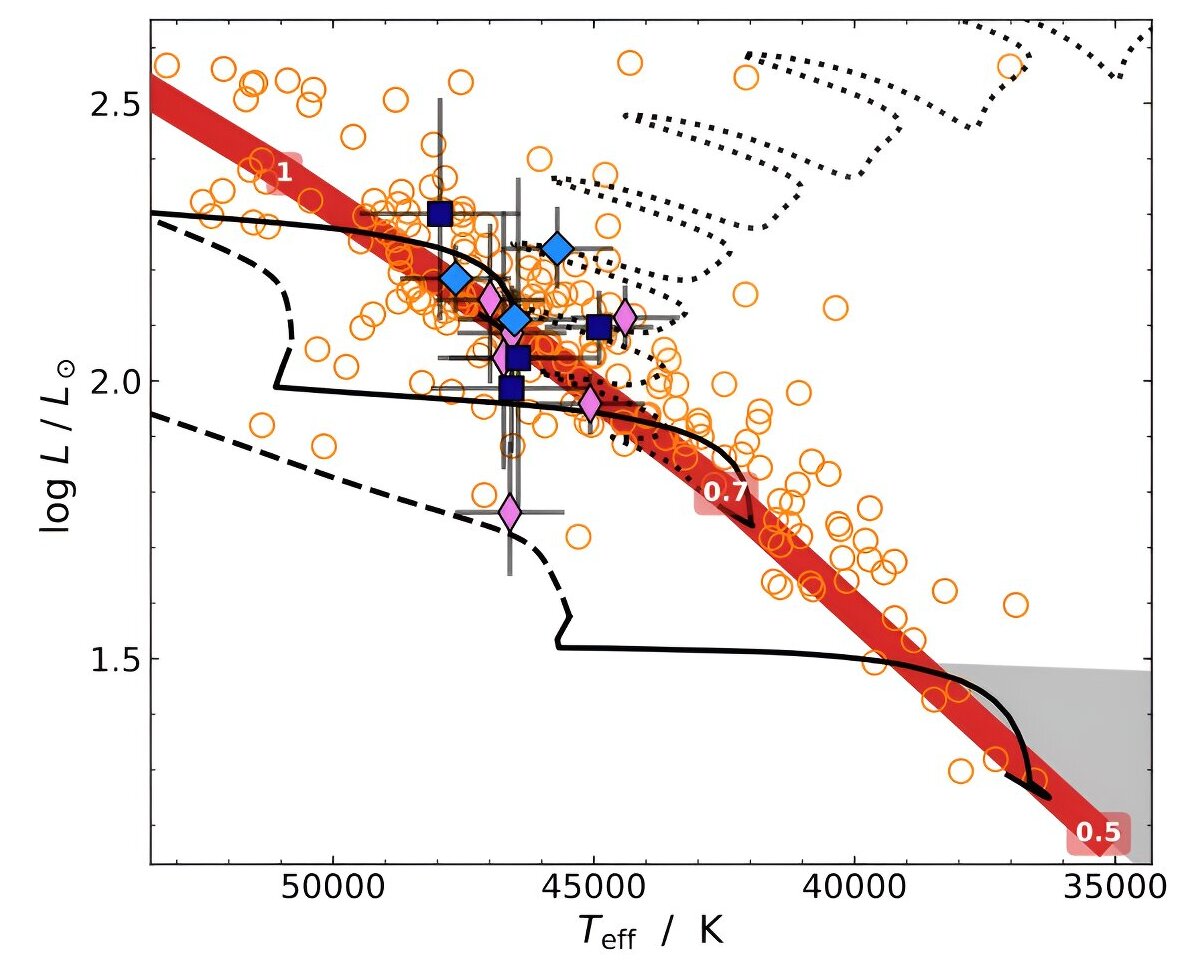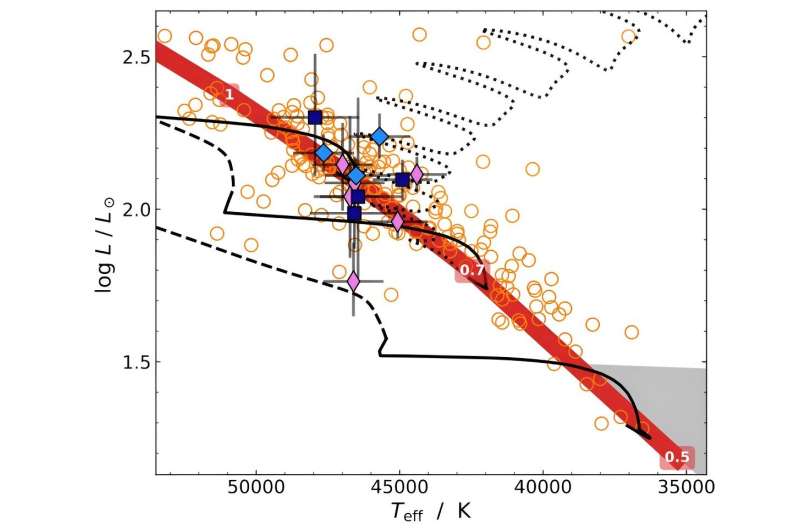

An international team of astronomers reports the discovery of three new helium-enriched hot subdwarf stars with strong magnetic fields. The finding, made with the Southern African Large Telescope (SALT), is detailed in a research paper published Oct. 3 on the preprint server arXiv.
Helium-rich subdwarf O stars (He-sdOs) are hot compact stars in a pre-white dwarf evolutionary state. They are the natural outcome of double helium white dwarf (WD) mergers. They are helium dominated, and most of them have effective temperatures between 40,000 and 50,000 K.
Observations conducted in recent years have identified a rare class of magnetic helium-rich hot subdwarfs, with magnetic fields ranging from 300 to 500 kG. It is assumed that their magnetic fields are generated in white dwarf merger events. However, it still remains unclear why the vast majority of He-sdOs do not show magnetic fields, given that they are also thought to be formed during such mergers.
Now, a group of astronomers led by Matti Dorsch of the University of Potsdam in Germany reports the detection of three new He-sdOs of the rare magnetic subclass. The discovery was made using SALT’s Robert Stobie Spectrograph (RSS), as part of the ongoing SALT survey for helium-rich hot subdwarf stars.
“We have identified three new magnetic He-sdO stars among the sample of 592 stars observed with SALT/RSS,” the researchers wrote in the paper.
The newfound magnetic He-sdOs received designations J123359.44−674929.11, J125611.42−575333.45, and J144405.79−674400.93. This discovery expands the total number of known magnetic hot subdwarfs to seven stars.
According to the study, the stars detected by Dorsch’s team have magnetic field strengths at a level of about 200 kG. Therefore, their magnetic fields are somewhat weaker than those of the previously known magnetic He-sdOs.
The observations found that J123359.44−674929.11, with a mass of about 0.48 solar masses, is the least massive star out of the three reported in the paper. J125611.42−575333.45 and J144405.79−674400.93 have estimated masses of approximately 0.74 and 0.56 solar masses, respectively.
The study also found that all the three new He-sdOs have comparable radii (between 0.175 and 2.1 solar radii) and effective temperatures (46,000-47,680 K).
The analysis of the properties of all the known magnetic He-sdOs allowed the authors of the paper to draw some conclusions regarding their origin. They propose that these stars are the result of mergers of helium white dwarfs with hydrogen/helium white dwarfs.
“Our proposal is that the magnetic subdwarfs arise from the merger of a He-WD with a H+He-WD. As they merge, the H+He-WD is destroyed and fully mixed. Most of its mass condenses onto the HeWD’s surface,” the researchers concluded.
More information:
M. Dorsch et al, Discovery of three magnetic He-sdOs with SALT, arXiv (2024). DOI: 10.48550/arxiv.2410.02737
Journal information:
arXiv
© 2024 Science X Network
Citation:
Team discovers three new magnetic and helium-enriched hot subdwarf stars (2024, October 9)
retrieved 9 October 2024
from https://phys.org/news/2024-10-team-magnetic-helium-enriched-hot.html
This document is subject to copyright. Apart from any fair dealing for the purpose of private study or research, no
part may be reproduced without the written permission. The content is provided for information purposes only.